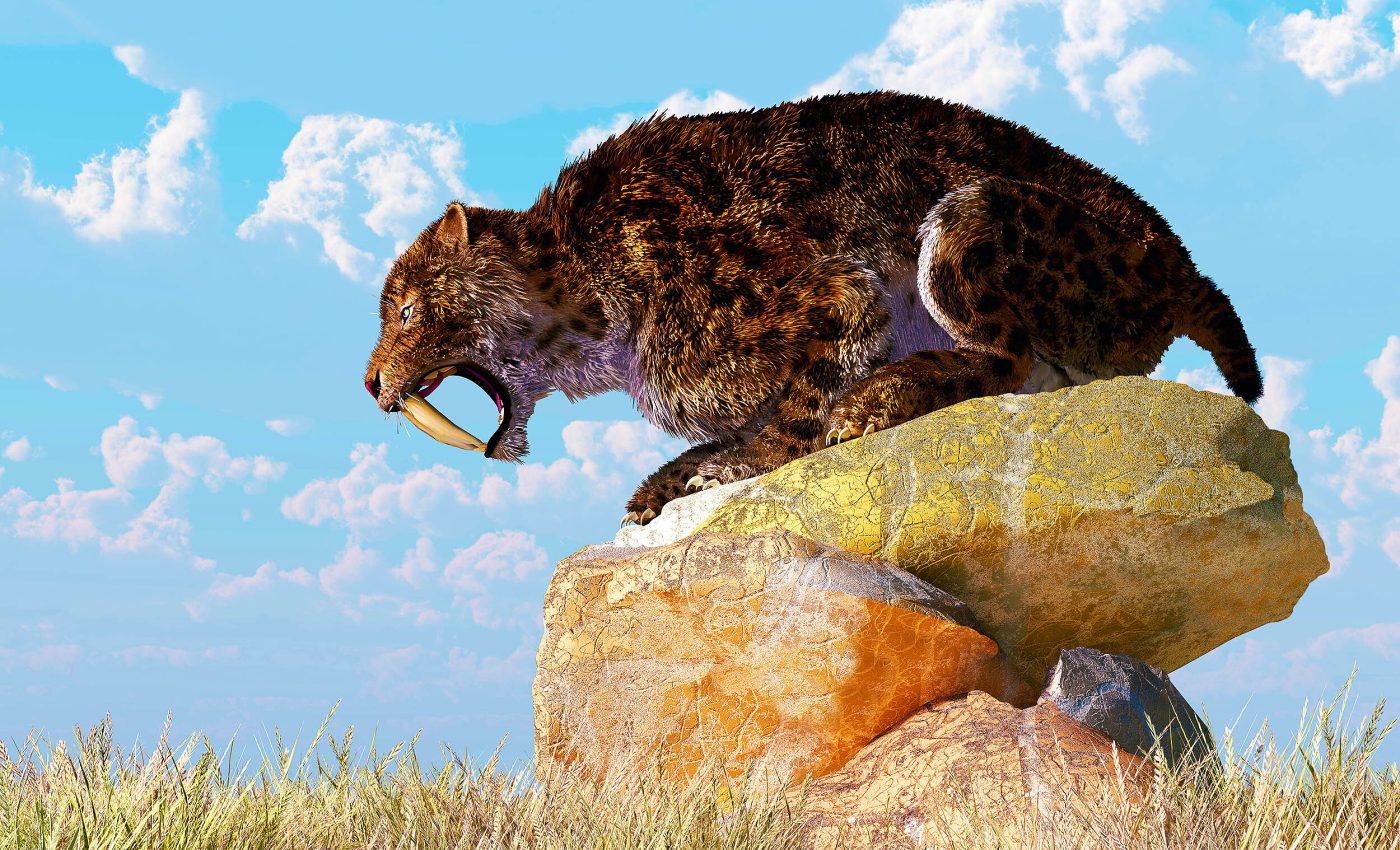
"Ugly" fossil find reveals secrets of large prehistoric cats
Important scientific discoveries often come from the most unassuming sources. Such is the case with a modest, 6-centimeter-wide fossil of bone and teeth discovered on a Texas beach that belonged to a prehistoric large cat.
Initially, this fossil might not catch the eye, looking more like a nondescript, lumpy rock than a window into the past. However, its ordinary appearance belies its significant contribution to our understanding of prehistoric life.
Fossil’s hidden secrets
John Moretti, a doctoral student leading the research at The University of Texas at Austin’s Jackson School of Geosciences, found the fossil to be more intriguing upon closer inspection. He compared it to a geode – unremarkable on the outside but holding valuable secrets within.
An X-ray conducted at the university’s Computed Tomography Lab revealed an unerupted hidden canine tooth nestled within the jawbone, a critical clue to identifying the fossil’s origins.
Valuable clues in a saber tooth
This particular fossil was determined to be from a Homotherium, a genus of large cats that roamed the Earth for millions of years.
The presence of the unerupted tooth, indicative of a juvenile not yet fully matured, was crucial. This stage of development meant the tooth was protected from damage, unlike fully erupted teeth which could have been broken off and lost.
“Had that saber tooth been fully erupted and in its adult form, it would have just snapped right off,” Moretti explained. “It wouldn’t have been there, and we wouldn’t have had it to use as evidence.”
Insights from the cat fossil
Homotherium was not only a large cat but also robust, resembling a jaguar in size, with an elongated face and a distinctive sloping back that ended in a bobtail. These cats had serrated canine teeth covered by large gum flaps, similar to those seen in domestic dogs today.
The discovery of this particular large cat fossil on the now-submerged continental shelf connecting Texas and Florida provides new insights into the region’s past ecology.
This area, which is believed to have been a Neotropical corridor during the Late Pleistocene, likely facilitated the movement of various animals including capybaras and giant armadillos from Mexico through Texas to Florida.
The presence of big carnivores like Homotherium would have played a significant role in controlling prey populations and shaping the biodiversity of the region.
Connecting past and present
The cat fossil’s journey from discovery to scientific revelation spans over six decades. Initially found by Russell Long, a professor at Lamar University, it was later donated by U.S. Representative Brian Babin, a former student of Long’s and a trained dentist.
Babin’s unique background in paleontology and dentistry enabled him to recognize the true nature of the fossil.
“Without question, my professional knowledge and what I’ve learned as a dentist helped me in that regard,” Babin noted, highlighting the interdisciplinary contributions that often aid in such discoveries.
The research is part of a broader study on McFaddin Beach fossils initiated in 2018, involving multiple co-authors and institutions. This collaborative effort underscores the collective endeavor of science to piece together the complex puzzle of our planet’s ancient history.
Lost group of large cats
Homotherium, commonly called the “scimitar-toothed cat,” is an extinct genus of large saber-toothed cats that lived during the Pleistocene epoch. These formidable predators roamed across multiple continents, including North and South America, Europe, Asia, and Africa, for over 5 million years.
Unlike their famous relatives, the Smilodon (saber-toothed tiger), Homotherium had shorter, serrated canine teeth and a more robust, muscular build. Their teeth were adapted for slicing through flesh, indicating they were highly efficient predators.
The large cat’s physical features included an elongated face, a sloping back, and elongated limbs, suggesting they were built for endurance running.
These adaptations likely made the cats successful pack hunters, capable of chasing down large prey such as mammoths, rhinoceroses, and other large herbivores. Their presence in diverse environments, from open plains to coastal regions, demonstrates their adaptability.
Extinction of Homotherium
The extinction of Homotherium around 10,000 years ago coincides with significant climate changes, human expansion, and the extinction of many large prey species.
These factors likely contributed to their decline. Despite their extinction, the large cat’s fossils continue to provide valuable insights into prehistoric ecosystems and predator-prey dynamics.
As more findings like this come to light, they enrich our understanding of the natural world and its former inhabitants. Each piece of bone or tooth, no matter how small or unappealing, could be the key to unlocking secrets of the Earth’s vast, untold past.
The study is published in the journal The Anatomical Record.
—–
Like what you read? Subscribe to our newsletter for engaging articles, exclusive content, and the latest updates.
Check us out on EarthSnap, a free app brought to you by Eric Ralls and Earth.com.
—–













